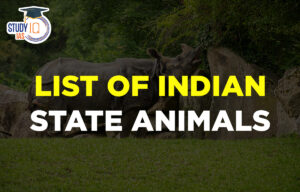Table of Contents
Context: With rising uncertainties in the South Asian region, a paper written by a doyen of India’s strategic affairs community, K. Subrahmanyam, titled “India’s Relations with her Neighbours”, published by Strategic Analysis, the flagship journal of the Institute for Defence Studies and Analyses (IDSA), in March 1987, provides a way forward.
Background: Uncertainties in South Asian Politics
- Nepal’s political stability remains bleak with successive elections throwing up a hung parliament.
- Ahead of elections in Bangladesh, an enfeebled opposition is attempting to revert to agitation.
- In Maldives, a presidential contest could tilt the balance between democracy and authoritarianism.
- Sri Lanka is slowly recovering from an unprecedented economic meltdown.
- Pakistan is plagued by a multitude of political, economic and security crises.
Decoding the Editorial: Unique Indian values
The South Asian region constitutes an integrated civilization area bound together by shared religions, languages, cultural traditions and blood ties. Yet, the values underlying the Indian state stand out.
- Secularism and linguistic autonomy
- They were compulsions, if Indian unity and integrity were to be preserved.
- However, for countries like Pakistan and Bangladesh and sometimes India too, there is a conflict between those would like to build social, political and economic structures and processes on the basis of continually evolving knowledge and those who would like to freeze such evolution, arguing that societal structures and processes should be based on traditions, scriptures and belief systems formulated centuries ago.
- Democracy and Federalism
- India pursued these values because they were not just imported western values but because they were absorbed and internalised during India’s century-long freedom struggle.
- Democracy was no more an import than Islam or Christianity in India.
- India had endured because of its enormous capacity to absorb, internalise, modify and transform, and yet retain its personality.
- Hence, local government, free press, trade union rights, liberal democratic multiparty competitive politics, adult suffrage, secular outlook and acceptance of the state as a vehicle of development became planks in the freedom struggle.
- India as a unity
- The unity and integrity of a nation have to be based on a social contract among the people to be formulated and sustained through representative structures.
- According to western scholars, India was never united before the British brought the whole country under a single administrative structure.
- However, three or four centuries ago, there were no nation states anywhere in the world. Even at that stage in the world outside India, there was widespread recognition of India and Hindustan as a unity in terms of culture, civilization and even administrative structure.
- The British Queen, Elizabeth I, granted a charter to the East India Company. The westerners named the ocean around India as the Indian Ocean.
- It is such shared historical memories that bind a people together as a nation, not language and not religion.
Way forward for India in South Asia:
- Economic and technological growth: With growth, India’s neighbours will adjust themselves to the Indian reality and stop thinking in terms of invoking China and other extra-regional powers as countervailing factors.
- India should develop its military power: This is necessitated to respond to the pressures of this age of coercive diplomacy.
- Focus on relations with the industrialized world: India’s diplomacy as distinct from its aid programmes, trade and people-to-people interaction should place less emphasis on its South Asian neighbours.
- Low key role in the South Asian Association for Regional Cooperation (SAARC): India’s neighbors want this and India should exercise extreme patience till such time as its neighbors realize how much it can help them in their nation-building.
- Reciprocity: It is a basic requirement for cooperation on issues such as river waters and the use of natural resources.
Beyond the Editorial: India and SAARC
- India has signed 13 Regional Trade Agreements (RTAs)/Free Trade Agreements (FTAs) with countries of SAARC in 2022.
- India’s initiative of extending its National Knowledge Network (NKN) to the countries of South Asia has been extended to Sri Lanka, Bangladesh and Bhutan.
- India also hosted the Interim Unit of SAARC Disaster Management Center (IU) at the Gujarat Institute of Disaster Management (GIDM), Gandhinagar. It has been operational since November 2016, serving the needs of all SAARC member states through policy advice, technical support on system development, capacity building services and training for holistic management of disaster risk in the SAARC region.
- India is home to South Asian University (SAU). It was established through an Inter- Governmental Agreement at the 14th SAARC Summit (April 2008) to provide world class educational facilities.


 Daily Quiz 17 April 2025
Daily Quiz 17 April 2025
 Nilgiri Biosphere Reserve, Map, Climate,...
Nilgiri Biosphere Reserve, Map, Climate,...
 Complete List of Indian State Animals
Complete List of Indian State Animals





















